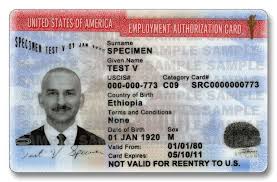 Not everyone realizes but there are huge backlogs of cases for employment based immigrant visas. For about 1 year now the EB-1 category (Extra-ordinary Ability, Outstanding Professor and Researchers and Intra-Company Transferees) category has been backlogged about 1 year for most of the world and several years for China and about 4-5 years for India. The EB-2 category, while current for most of the world, has been backlogged about 4 years for China and about 10 years for India. The same is true of the EB-3 category. For those from India and China especially, the requirement of having to wait 10 years or more for a green card is hard on the family. It can cause children, who may be 2 or 3 when they arrive in the US, to age out before a green card can be obtained – forcing these now grown Children to either go home or get their own visas and begin their own processes. Furthermore, the employees are working for years without hope of major pay increases or promotions, for fear of being fired (if they ask and are denied) and loosing their place in line.
Not everyone realizes but there are huge backlogs of cases for employment based immigrant visas. For about 1 year now the EB-1 category (Extra-ordinary Ability, Outstanding Professor and Researchers and Intra-Company Transferees) category has been backlogged about 1 year for most of the world and several years for China and about 4-5 years for India. The EB-2 category, while current for most of the world, has been backlogged about 4 years for China and about 10 years for India. The same is true of the EB-3 category. For those from India and China especially, the requirement of having to wait 10 years or more for a green card is hard on the family. It can cause children, who may be 2 or 3 when they arrive in the US, to age out before a green card can be obtained – forcing these now grown Children to either go home or get their own visas and begin their own processes. Furthermore, the employees are working for years without hope of major pay increases or promotions, for fear of being fired (if they ask and are denied) and loosing their place in line.
Congress has been looking at ways of fixing this. The most popular bill currently, that almost passed the Senate, would alleviate the issue by removing the per country limitations currently in place for employment based immigrant visas. Currently, all employment based immigrant visas are divided among all countries in the world evenly. While the Department of State can reallocate some visas based upon usage patterns, no country can get more than 7% of the immigrant visas in any given category. That means, for example, for EB-1 visas India can only get about 3,000 visas per year (and that includes visas for all dependents of the primary applicant (spouses and children). The bill in congress would remove those limitation in steps and would put in place protections so those from other countries who already applied in the employment categories when the bill was filed, would not loose their place in line. However, the effect of this bill would hit people from EVERY country.
Within 4-9 years all countries would be facing major backlogs in all categories. While the current backlog would be cleaned out by then, there would still be significant delays for everyone. Another bill, in addition to removing the per country limitations would also remove dependents from the visa count. This means a family of 6 or a family of 4 would be counted as just one immigrant visa against the quota. This would greatly help to reduce the backlog and would go a long way towards ameliorating the issues caused by just removing the per country cap. This bill, however, would also raise the number of employment based immigrant visas, a portion of the bill that is unlikely to pass this Congress or, even if it were, to be signed by this President. There are currently other Senators working at removing the increase in immigrant visas from the bill to try to make it more passable.
Overall, while all these bills try to tackle this issue, the problems with our current immigration system are fairly widespread. Our immigration laws were written over 30 years ago now in many cases, and longer in some. Many things have changed since then and a major overhaul is certainly in order. However, because of the current polarization of our political system, it is doubtful that any such major reform could be passed anytime soon. Therefore, smaller fixes are all we can hope for in the near term. Hopefully congress can get together and put together a bill that will help everyone and help prevent the current backlogs we have.
Those interested in this issue can read a good article in The Washington Post here.
Please remember, as always, this blog does not offer legal advice. If you need legal advice, consult with a lawyer instead of a blog. Thank you.


